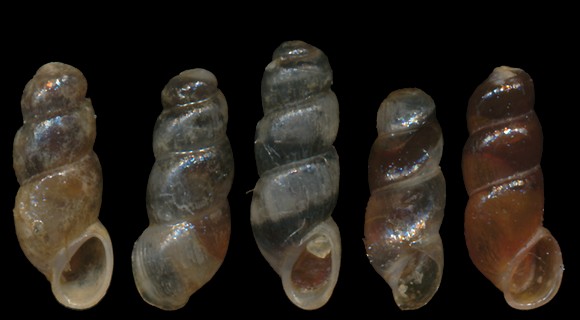
The many synonyms reflect the variability of the species, in size, shape, sculpture, colour, and also in the spectacular morphological change between juvenile and adult stages: concinnum, costulata, debilis, desnoyersii, laevigata, lowei, microlena, montaguana, montagui, punctata, punica, subtruncatus, theresa, truncatulum, truncatus…
On stones in splash zone, near the Bordj el Hissar, Chergui island, Kerkennah archipelago, S. Tunisia. 4,5 to 5mm.
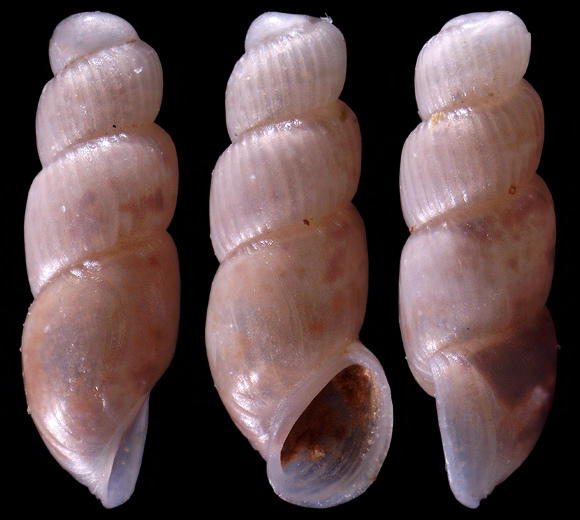
One of the best descriptions of the species was given by Bucquoy, Dautzenberg & Dollfus in Mollusques marins du Roussillon, Paris, 1886-1898: « Diagnosis. — Shell rather thin, semi-tranlucent and shiny, of a cylindrical shape. Spire shorten, made of three-four convex whorls, flattened in their middle, decorated of numerous longitudinal folds that are larger than their interspaces and weakly curved. Deep suture. Aperture oval, slightly pinched on the top and rounded at the base, with a continuous, lined peristome. Columella thick and a bit flexuous. Labial margin rounded, trimmed outside with a bead. Colour of a pale even fawn. Operculum horny, thin, paucispiral, with an offset nucleus and some fine wavy growth-lines. » – This specimen began with a moderately pronounced sculpture, and softened while aging. – 8m deep, Bozcaada island, Çanakkale, W. Marmara Province, NW. Turkey. 3mm.
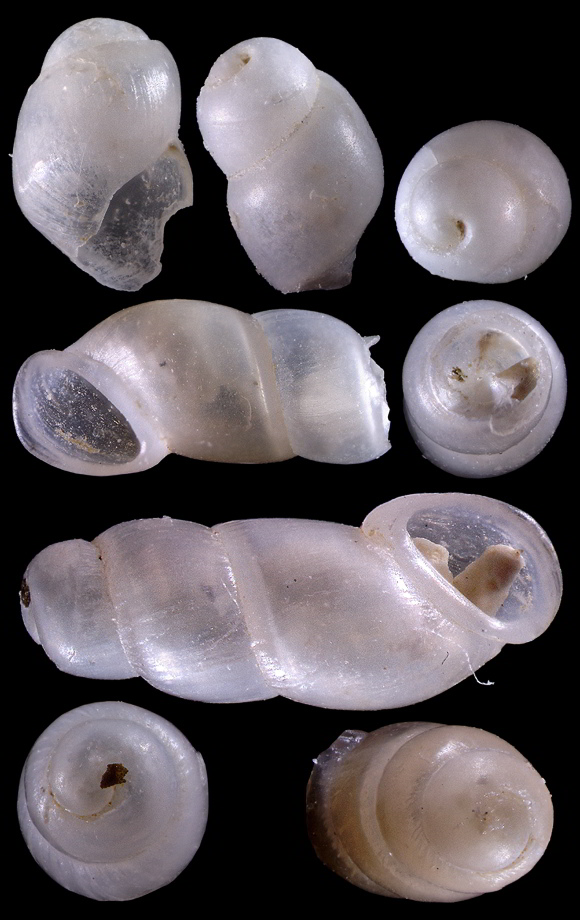
Downslope transported dead shells from crevices in extreme shallow water and slightly above, eastern shore of Anse des Fossettes, at the root of the eastern peninsula, Saint-Jean-Cap-Ferrat, Alpes-Maritimes, SE. France. 2,4-7,5mm. Smooth form.
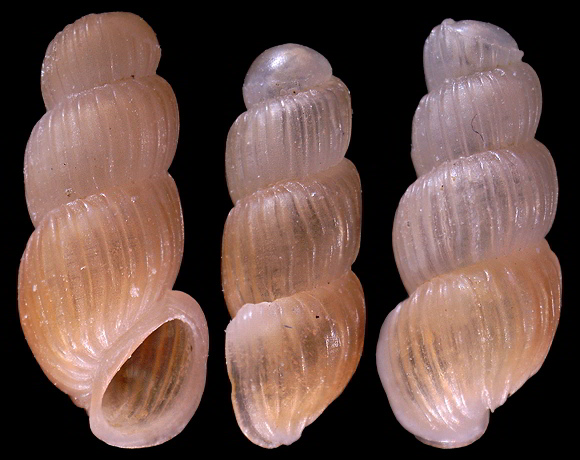
Adult specimens collected at 1-2m deep, in shell grit, in the southern border of the pool of sand trapped between the southern jetty of the harbour and the citadel, Methóni, Messinia, Peloponnese, SW. Greece. There is, around and under the walls of the small venetian fortress that closes the pool in the south, a shallow fringing reef with many rocks and stones exposed to splashes and sea spray. Truncatellas live there and also at the base of the citadel. 4,6-4,8mm.
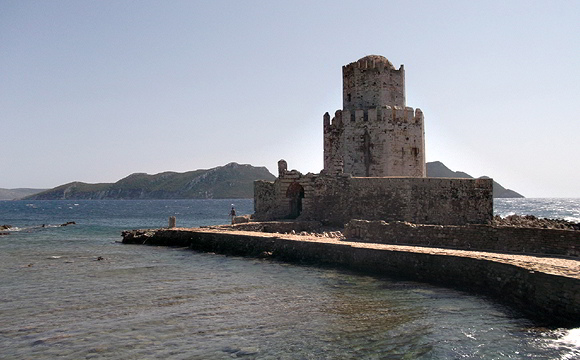
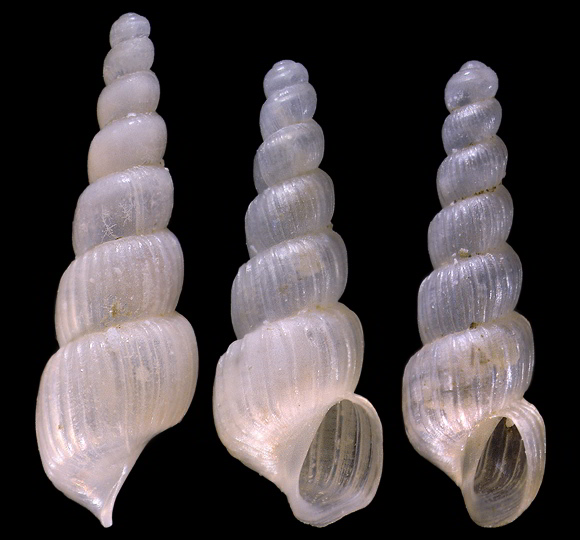
BDD: « Juveniles of T. subcylindrica are so different of the adult that many authors considered it as being of an other genus (Fidelis Risso, Choristoma Leach). At this stage, the spire has a larger number of whorls (up to nine). Later, the five of six first ones break off and a new summit appears, slightly convex; the truncation-line is often visible on fresh specimens. » Same spot. 4,4-5,2mm.
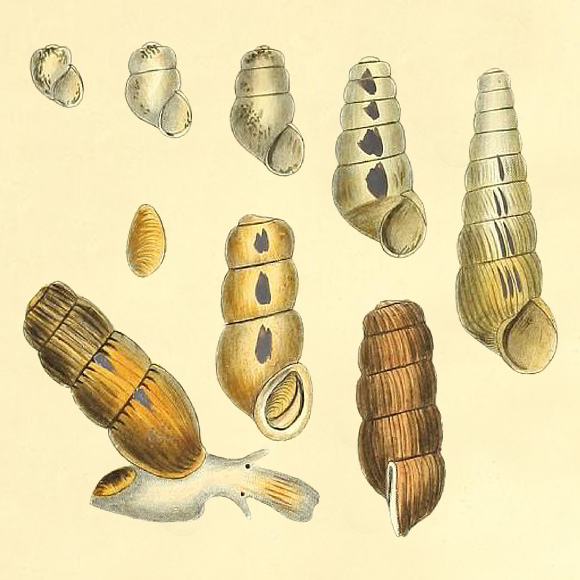
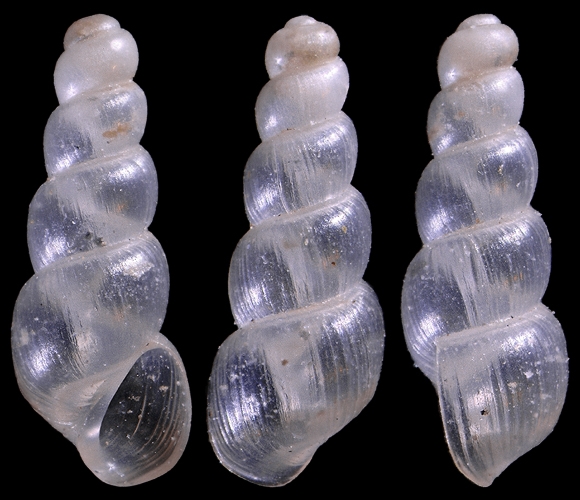
The abandoning of the first whorls, when they have become too tiny for the animal, offers a considerable evolutive advantage: in getting rid of a useless but still weighing part of their shell, the Truncatellas enjoy a substantial energy saving.
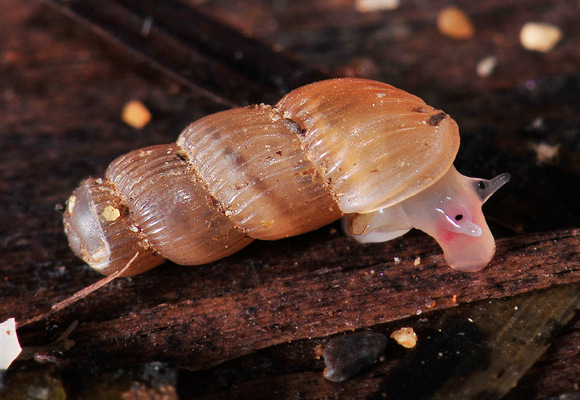
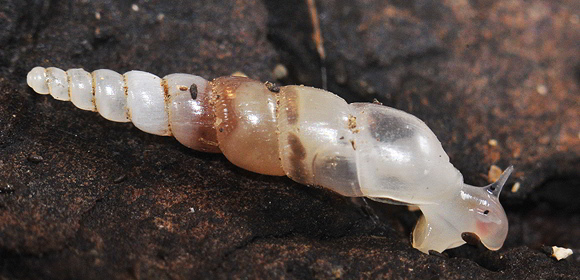
Often, juvenile specimens are longer than they will be at adult stage. Here, a smooth specimen close to the variant “punctata”, in which the sculpture is reduced to small strokes that build what has been considered as a pattern of dots near the suture (« constantly stippled at the suture » Monterosato).
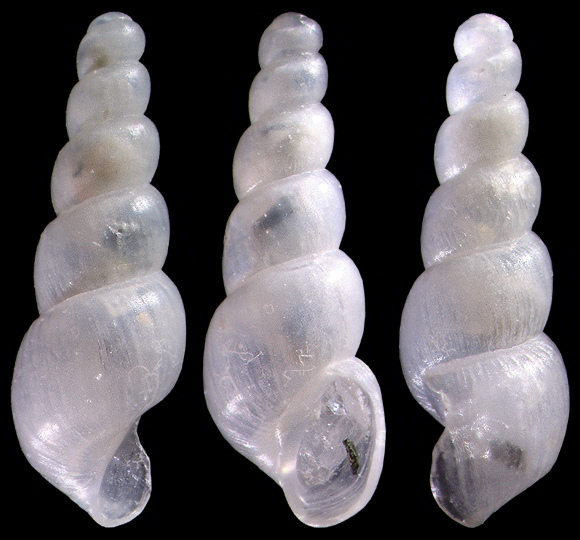
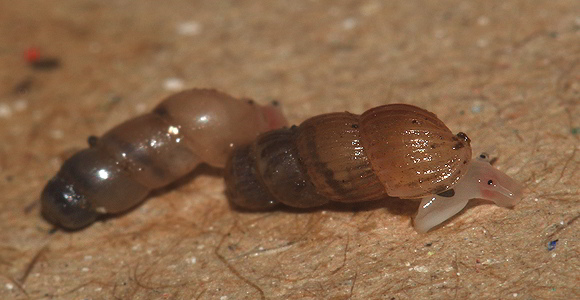
Ansa de la Roqueta, Salses-le-Château, Occitania.
Original picture provided by A. Bertrand (FR).
– (CC BY-NC-SA) –
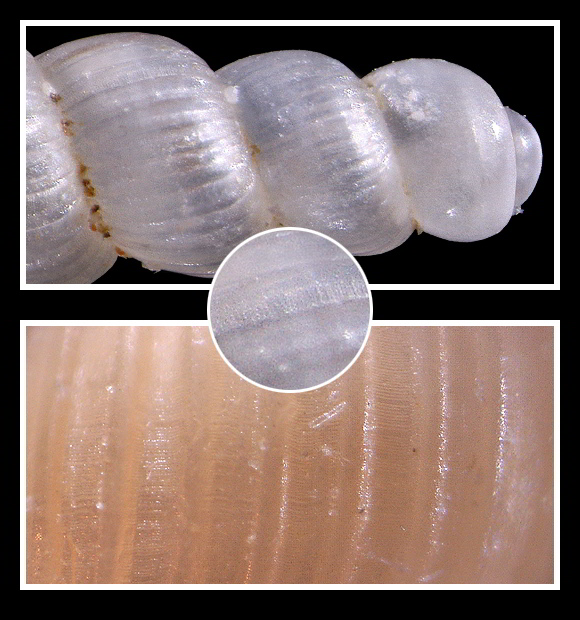
Protoconch smooth. But some thin spiral striae appear between the costae of the teleoconch in young as in old radially folded specimens. – Methóni, 4,6-5,2mm.
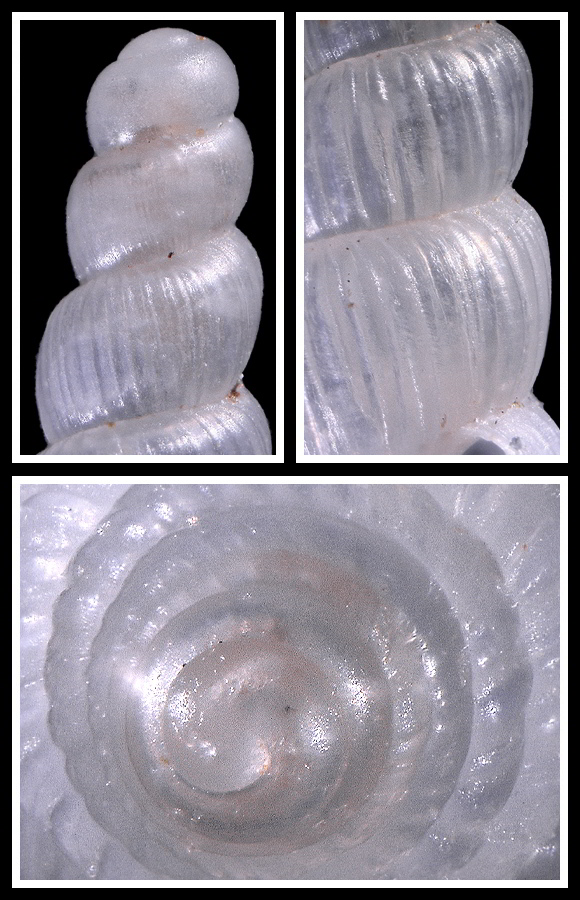
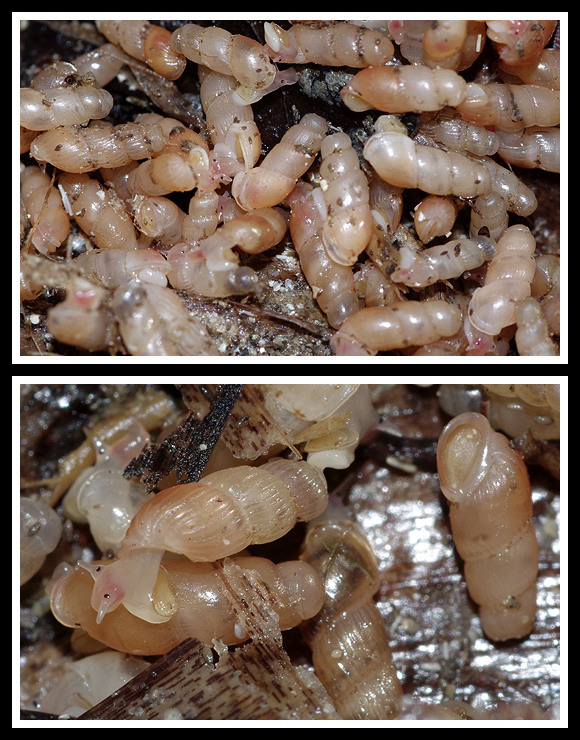
Here is a rather gregarious species. Above: elements of a population that lives under stones among dead leaves of Posidonia, Sausset-les-Pins, west of Marseille, Provence, S. France. Notice the shape of the operculum, and also the constantly pink zone located at the base of the tentacles, a few micrometers under the eyes. Original pictures provided by D. Pavon (FR) – (CC BY-NC-SA).